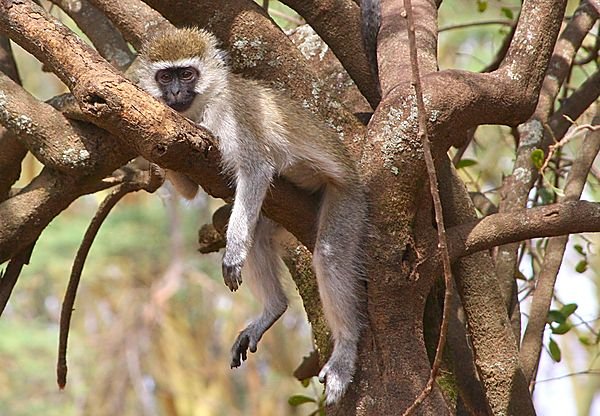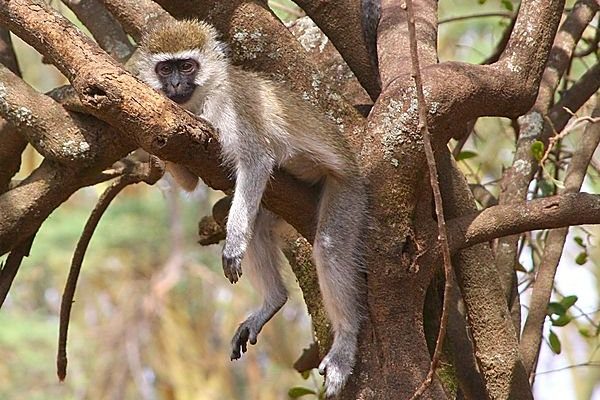
Vervet monkeys are social animals, living in tight-knit groups that resemble a big, extended family. You might say they throw a wild party every day, where everyone pitches in to raise the young ones. As we dive into the world of vervet monkey parenting, you’ll see just how they nurture their offspring and navigate the challenges that come with raising a baby in the wild. Grab your favorite drink, and let’s explore!
The Social Structure of Vervet Monkeys
Vervet monkeys live in troops that can range from 10 to over 50 individuals. This social structure is vital for their survival and influences how they raise their young. Each troop has a hierarchy, typically led by a dominant male. This structure isn’t just for show; it plays a huge role in how the monkeys interact with one another.
You might be wondering why this hierarchy matters for parenting. In vervet monkey society, the dominant male gets first dibs on resources and mates, which can affect the entire troop. However, it’s the females who do most of the child-rearing. The mothers are often the primary caregivers, spending a lot of time nurturing and protecting their infants.
The camaraderie among females also plays a part in child-rearing. They often form strong bonds, sharing the responsibility of looking after the young ones. This means that while a mother is busy foraging for food, another female, perhaps a sister or a close friend, will watch over her baby. This collaborative effort is crucial, especially in their challenging wild environment.
Gestation and Birth: A Vervet Monkey’s Journey
The journey of a vervet monkey begins with a gestation period of about six months. During this time, the mother requires extra care and nutrition. She’ll often rely on her troop for support, making sure she gets enough food to nourish both herself and her growing baby. It’s a bit like a human preparing for a new baby—lots of nesting and gathering supplies!
When the time comes for birth, it’s quite a spectacle. Vervet monkeys usually give birth to a single baby. Twins are rare, but hey, you never know! Once the baby is born, the mother instinctively cradles it close to her body, keeping it warm and protected. This bond is immediate and essential for the newborn’s survival.
Here’s the thing: the first few days after birth are critical. The mother will often stay close to her baby, allowing for bonding and making sure it receives its first meals of nutrient-rich milk. You can imagine how this early bonding sets the foundation for a strong relationship in the future.
Caregiving: The Role of Mothers and Others
In vervet monkey troops, mothers are the primary caregivers, but they’re not alone. Other female members of the troop, including sisters, aunts, and even grandmothers, join in the fun. They often engage in gentle grooming, playing, and caring for the little ones. It’s a community effort, and it truly takes a village!
The mothers are attentive, always keeping an eye on their infants. As the baby begins to explore its surroundings, the mother makes sure to stay close but also allows some space for independence. It’s like when you teach a child to ride a bike—you’re there to catch them if they fall but also give them the freedom to learn.
Interestingly, vervet monkeys have been observed engaging in what some researchers call “alloparenting.” This means that other females will take turns caring for and watching over the babies. This collective approach not only gives mothers a chance to forage but also teaches young monkeys social behaviors and interactions.
Learning and Play: Social Skills in Action
As vervet monkeys grow, playtime becomes an essential part of their development. Through play, they learn vital social skills, like how to communicate and solve problems. You might see young monkeys chasing each other, swinging from branches, or climbing trees, all under the watchful eyes of their mothers and troop members.
Play isn’t just fun; it’s serious business! It helps young monkeys develop motor skills and understand social hierarchies. A little tug-of-war over a stick, for example, teaches them about competition and cooperation. Often, you’ll find that these playful interactions mimic adult behaviors, preparing the young ones for life in the troop.
The mothers also play a role in guiding their babies during these activities. They might join in on the fun or intervene when things get a bit too rough. It’s a delicate balance of letting them express themselves while also ensuring they learn appropriate social conduct.
Facing Challenges: Survival in the Wild
Life in the wild isn’t always easy, and vervet monkeys face their share of challenges. From predators like leopards and eagles to environmental factors such as drought, raising young ones requires constant vigilance. Mothers have to be on high alert, ready to protect their babies if danger approaches.
One of the biggest threats to young vervet monkeys is predation. When the troop is foraging or moving through their territory, mothers keep their infants close. In fact, they have been known to use alarm calls to warn their troops of potential threats. It’s a bit like a parent yelling “heads up!” when they see danger lurking.
Additionally, food scarcity can be an issue, especially during dry seasons. Mothers must find enough food not just for themselves but for their growing babies. This is why the troop’s social structure is so important. By working together, they can find food more efficiently and ensure everyone, especially the young, gets enough to eat.
Growing Up: Independence and Leaving the Nest
As vervet monkeys reach maturity, they start to become more independent. This usually happens around the age of one or two years. During this time, the young monkeys begin to explore beyond their mother’s immediate care, venturing into the troop’s social dynamics. You might even see them practicing their grooming skills on other troop members!
But it’s not just about the fun and games. The transition to independence is a crucial part of their development. They need to learn how to forage for food, interact with other monkeys, and navigate the social structure of the troop. This stage can be a bit awkward, similar to human teenagers trying to figure out their place in the world.
Eventually, young males will leave their natal troop to join other groups, while females often stay and integrate into the social fabric of their home troop. This dynamic helps maintain genetic diversity, which is important for the overall health of the population.
Raising young vervet monkeys in the wild is a fascinating process that reflects the intricacies of social living. From the supportive community to the playful learning experiences, every aspect is designed to ensure that the young monkeys are equipped for the challenges of life ahead. It’s a beautiful reminder of how interconnected life can be, not just among vervet monkeys but across the animal kingdom.
So, the next time you hear about vervet monkeys, remember that behind those playful antics lies a world of thoughtful parenting and social dynamics. The lessons they present about family, community, and survival are truly remarkable—and a bit reminiscent of our own human experiences, don’t you think?

